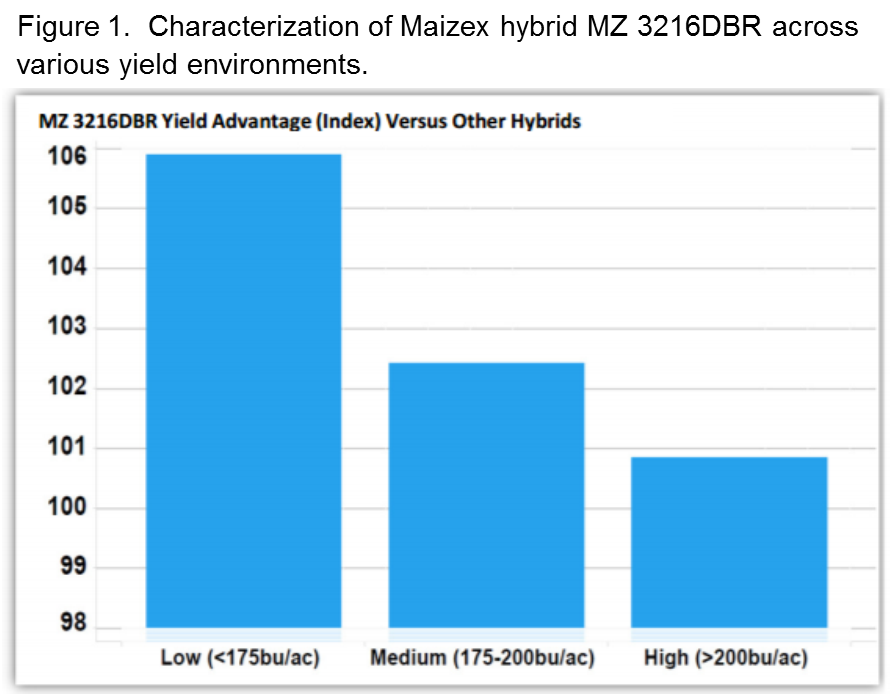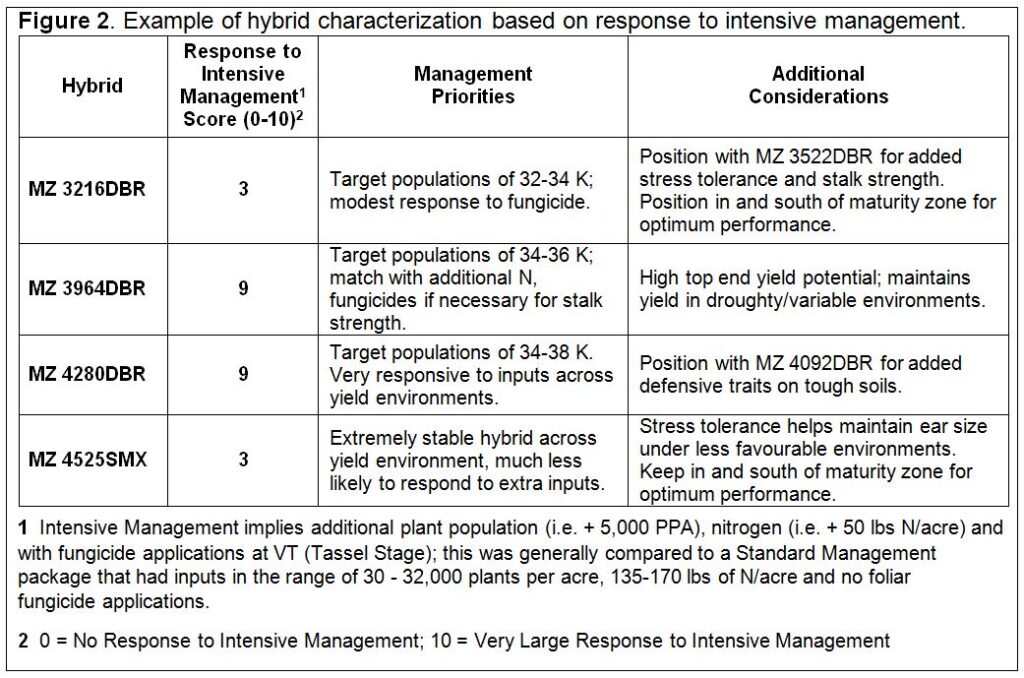Towards Better Hybrid Characterization
March 1, 2017 | Category: Agronomy |Getting the right hybrid in the right place under the right management can lead to increased profitability. However, to accomplish this we need to have a good understanding of a hybrid’s unique characteristics. With the clock ticking on a hybrid’s commercial life expectancy, there is a need to act fast and to come at it from several different angles.
Response to Yield Environment
A common approach to describing hybrids is to define them as offensive or defensive hybrids or perhaps the often used expressions of racehorse versus workhorse hybrids. This essentially demands information as to how well the hybrid yields across a range of yield environments. A hybrid that does relatively well in low yielding environments (compared to a group of competitive hybrids) but then struggles to be even an average yielder in high yielding environments is referred to as defensive hybrid. The opposite then is true for an offensive hybrid, which does relatively poorly in low yielding environments but then tends to top the pack in high yielding scenarios. The new Maizex Hybrid Information Sheets capture this information in a bar graph were relative yields are compared for a hybrid across low, mid and high yielding situations. In Figure 1, the performance of MZ 3216DBR is compared across various yield scenarios.

Of course not all hybrids fall easily into offensive versus defensive characterizations. Some hybrids perform reasonably well across a wide range of yield environments and their “stability” is a sought after quality. Other hybrids may have high yielding capability but might have some specific weaknesses that pull their yield back in certain situations. For example, an otherwise high yielding hybrid might have reduced tolerance to Northern Leaf Blight, and in a certain year or environment without a fungicide application it yields significantly lower than expected. There may be no value and it may not be accurate in trying to identify a hybrid like this as defensive or offensive hybrid; better to call it a good hybrid that needs to be managed correctly.
Response to Management
The other significant effort at Maizex is to characterize hybrids based on their response to management. The management components are seeding rate, nitrogen and fungicide use. This involves testing hybrids under standard management; 32,000 plants per acre, 160 lbs N/acre and no foliar fungicide, compared to intensive management; 37,000 plants per acre, 210 lbs N/acre and a foliar fungicide applied at tassel. Results from these trials allow us to rate hybrids on a scale of 1-10 as to how responsive they are to the intensive management package. Figure 2 illustrates the responsiveness rank and other important information for several hybrids.

Response to Soil Type
The third area that is being pursued in characterizing hybrids is the evaluation of hybrids across a range of soil types. In 2016, Maizex collaborated with Tony Balkwill of NithField Advanced Agronomy to conduct a trial where 6 hybrids were carefully examined for yield response to different soil types in a 60 acre field near Drumbo, Ontario. Tony had previously mapped the field by soil type and yield potential and then the 6 hybrids were deployed across the field to give a good representation of each hybrid in each soil zone with a high degree of replication. Figure 3 illustrates the experimental area, soil types and the hybrid layout.

The yield results from the Drumbo trial indicated that there was some minor changes in yield ranking of the hybrids from the lower yielding Fox Sandy Loam portions of the field to the higher yielding Brookston Silt Loam portions of the field (see Figure 4). The 2016 growing season at this site was relatively high in CHUs and low in rainfall. These conditions made it more likely that longer season hybrids would dominate in yield relative to shorter season hybrids. MZ 4525SMX is also known for its defensive nature which probably served it well across all soil types. It was interesting to note that MZ 4324SMX did move to the top of the pack on the Fox Sandy Loam soils while it was 18 bu/acre behind the top yield on the productive Brookston Silt Loams.

In the future, large amounts of data will pour into Maizex on all three fronts: Response to Yield, Response to Management, and Response to Soil Type in order to allow us to characterize hybrids carefully for a range of scenarios. This work will add value to growers whether they want to know which two hybrids to put into their multi-hybrid planter, which hybrids to plant on predominantly sandy soil, or which hybrids to use under high management systems.
If you would like to see all the data referenced in this article or explore other questions, please contact your local Maizex representative.
